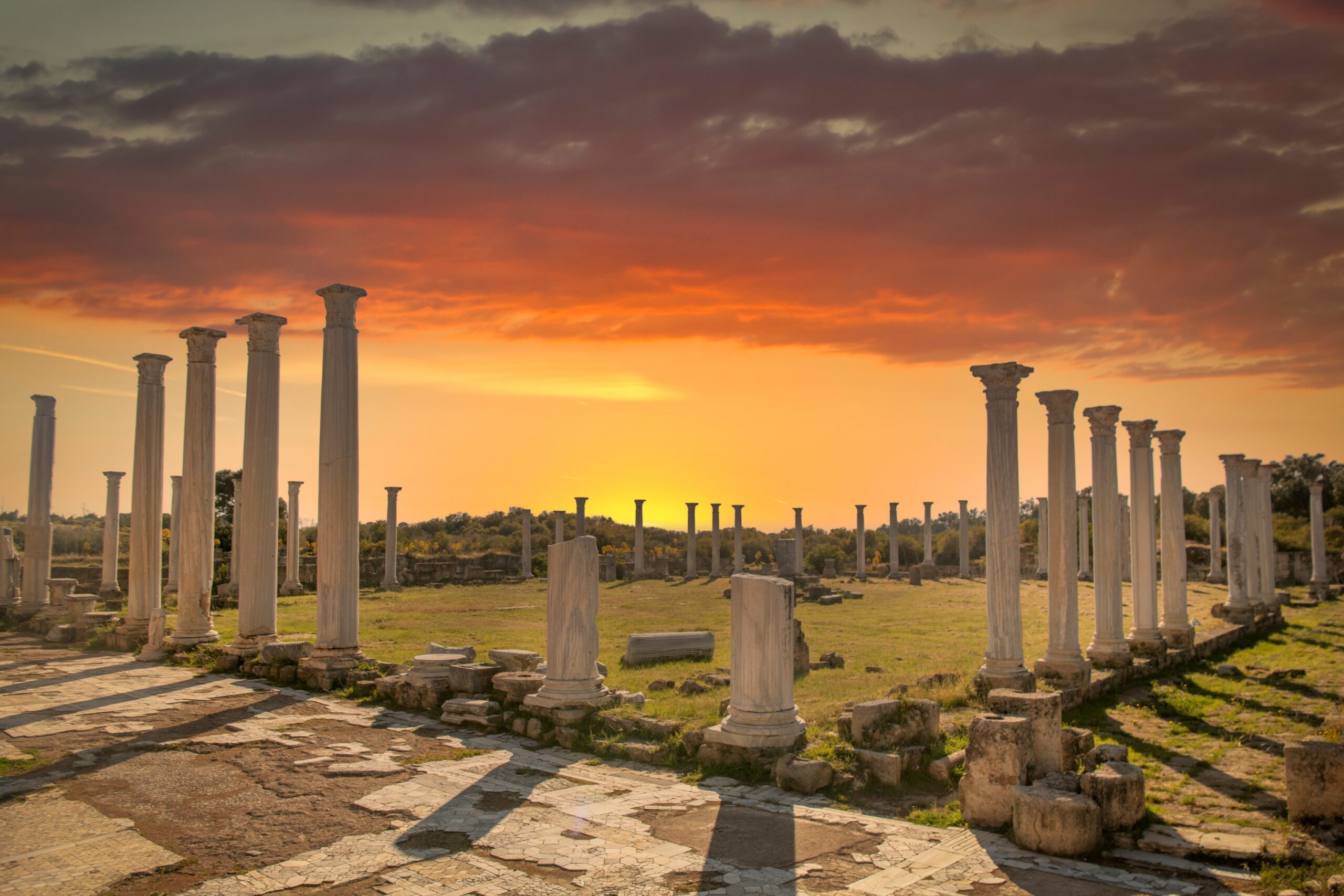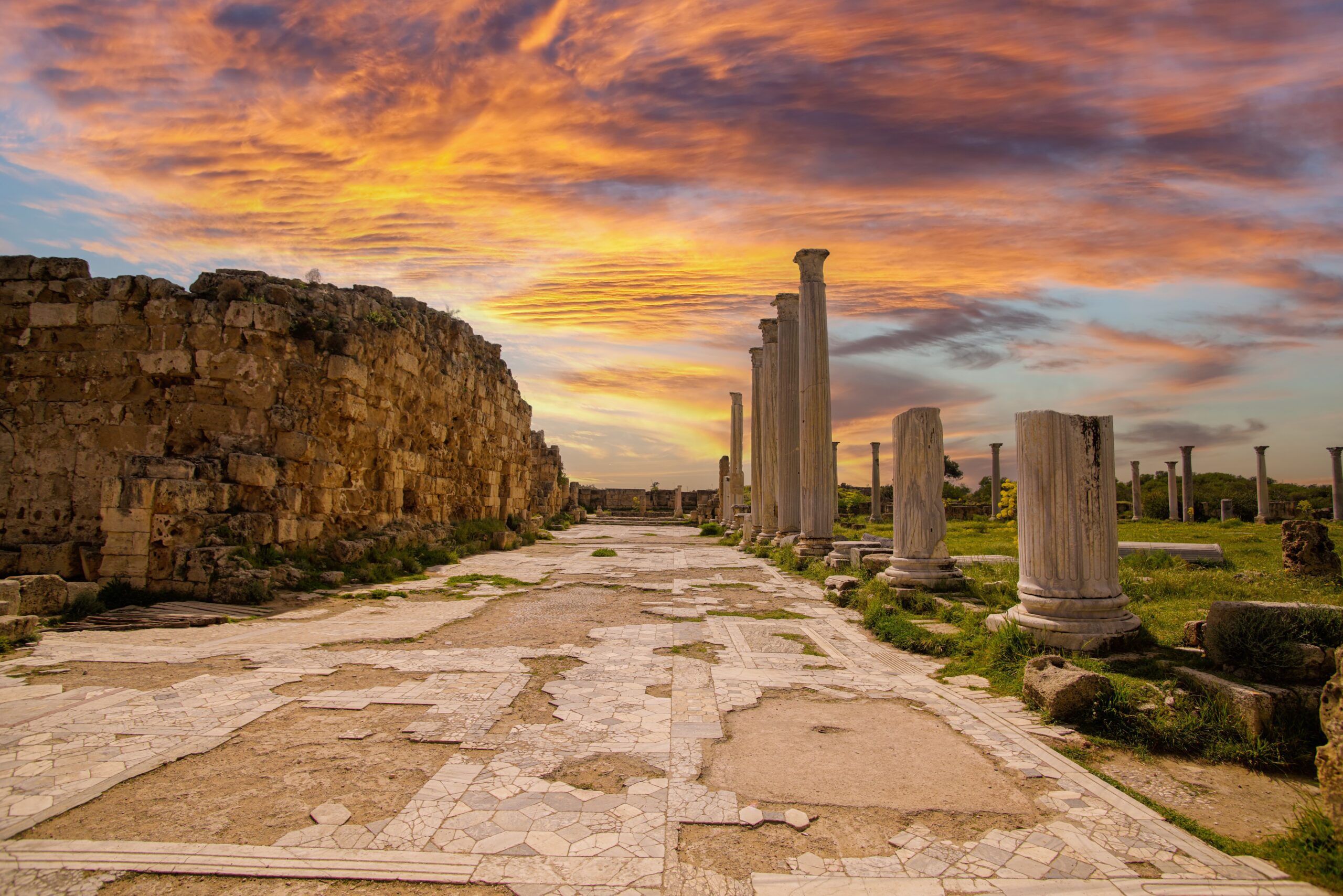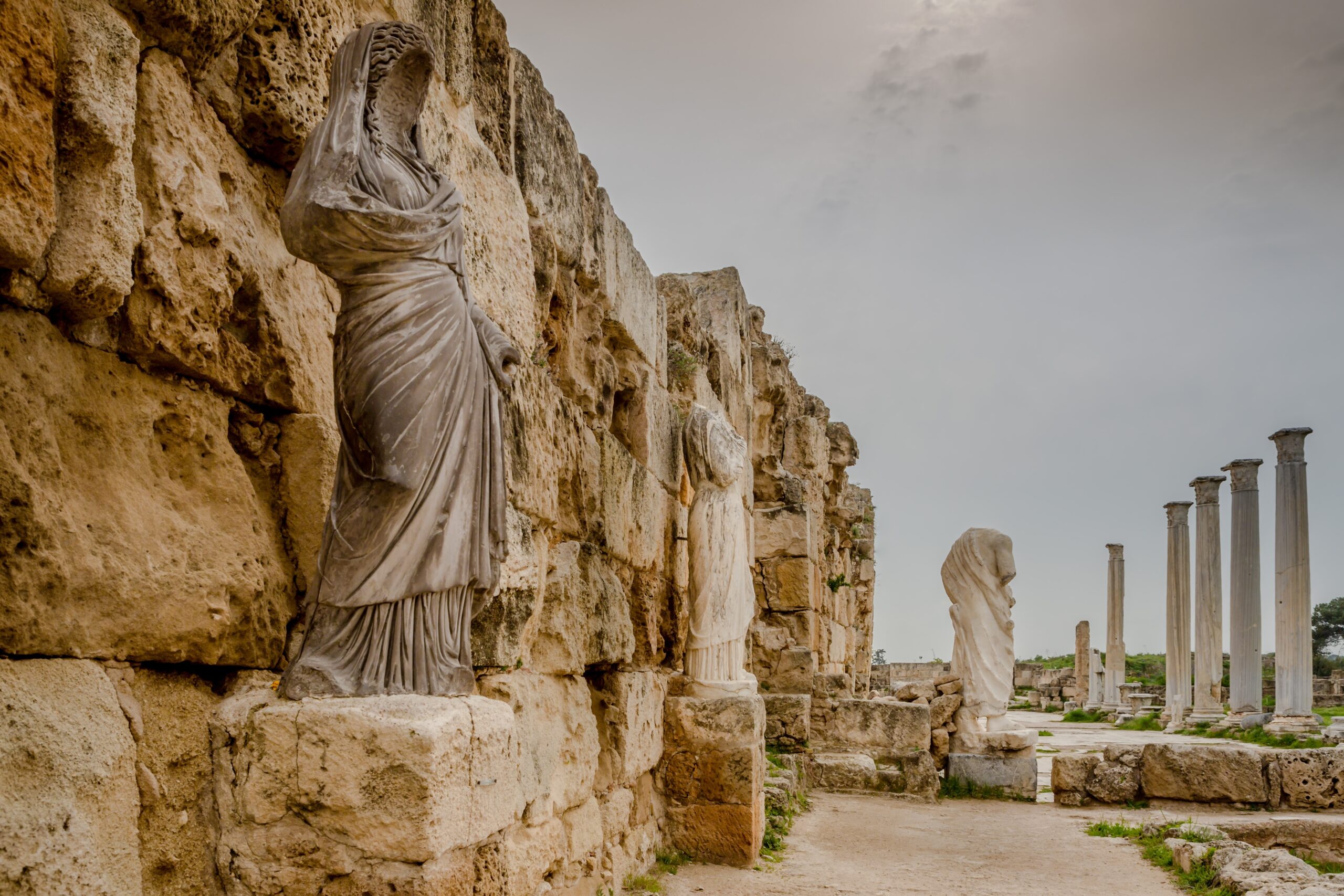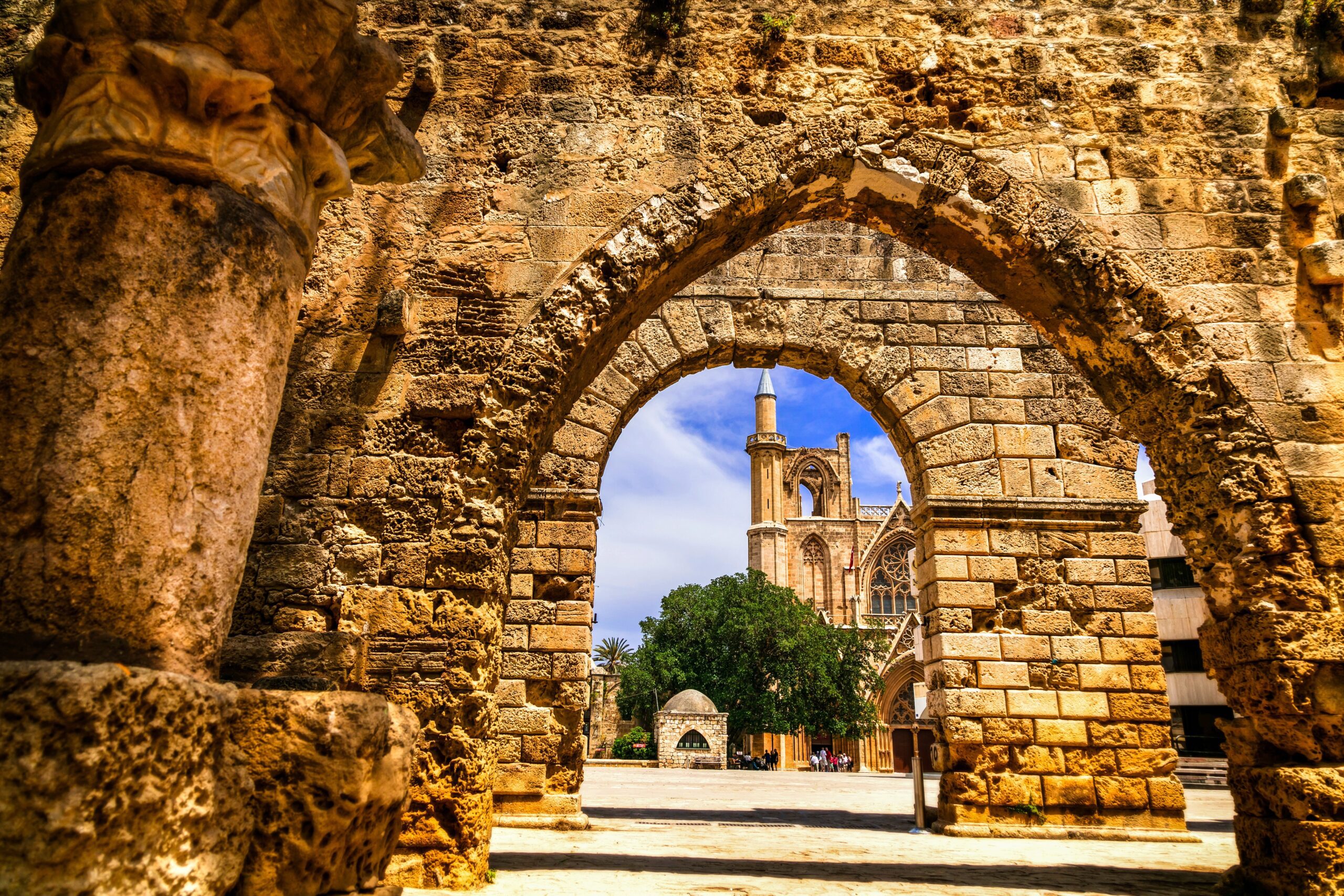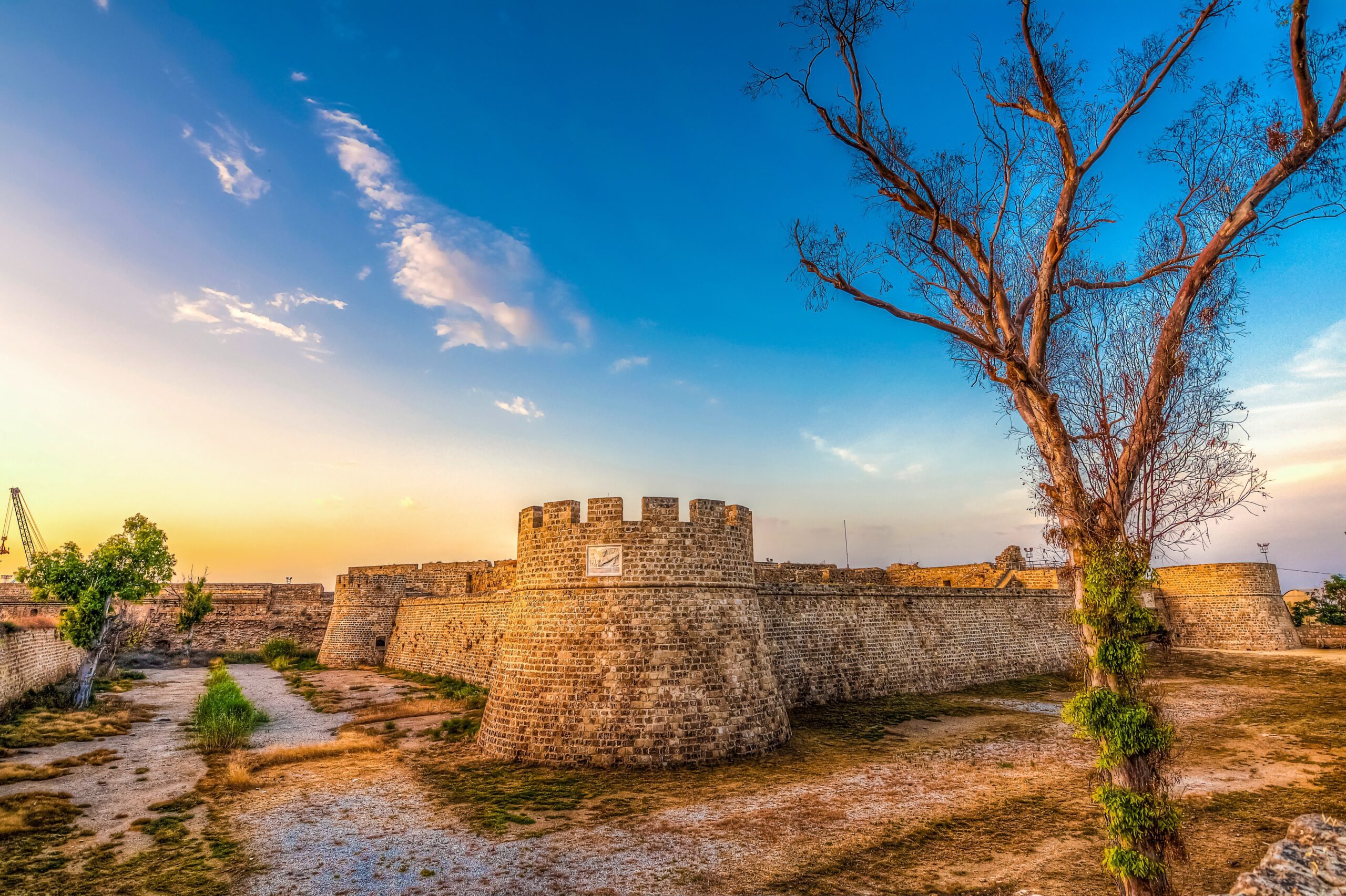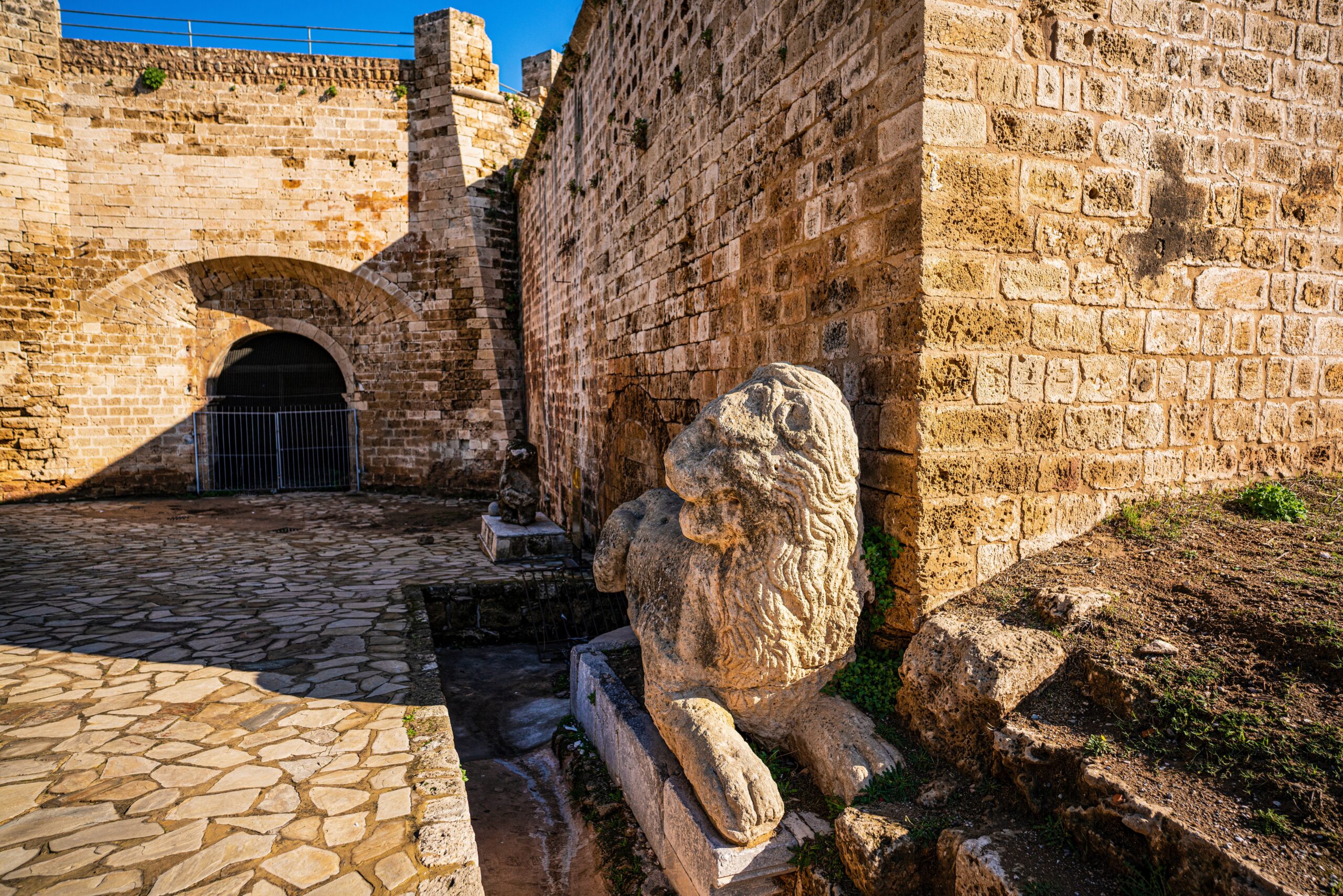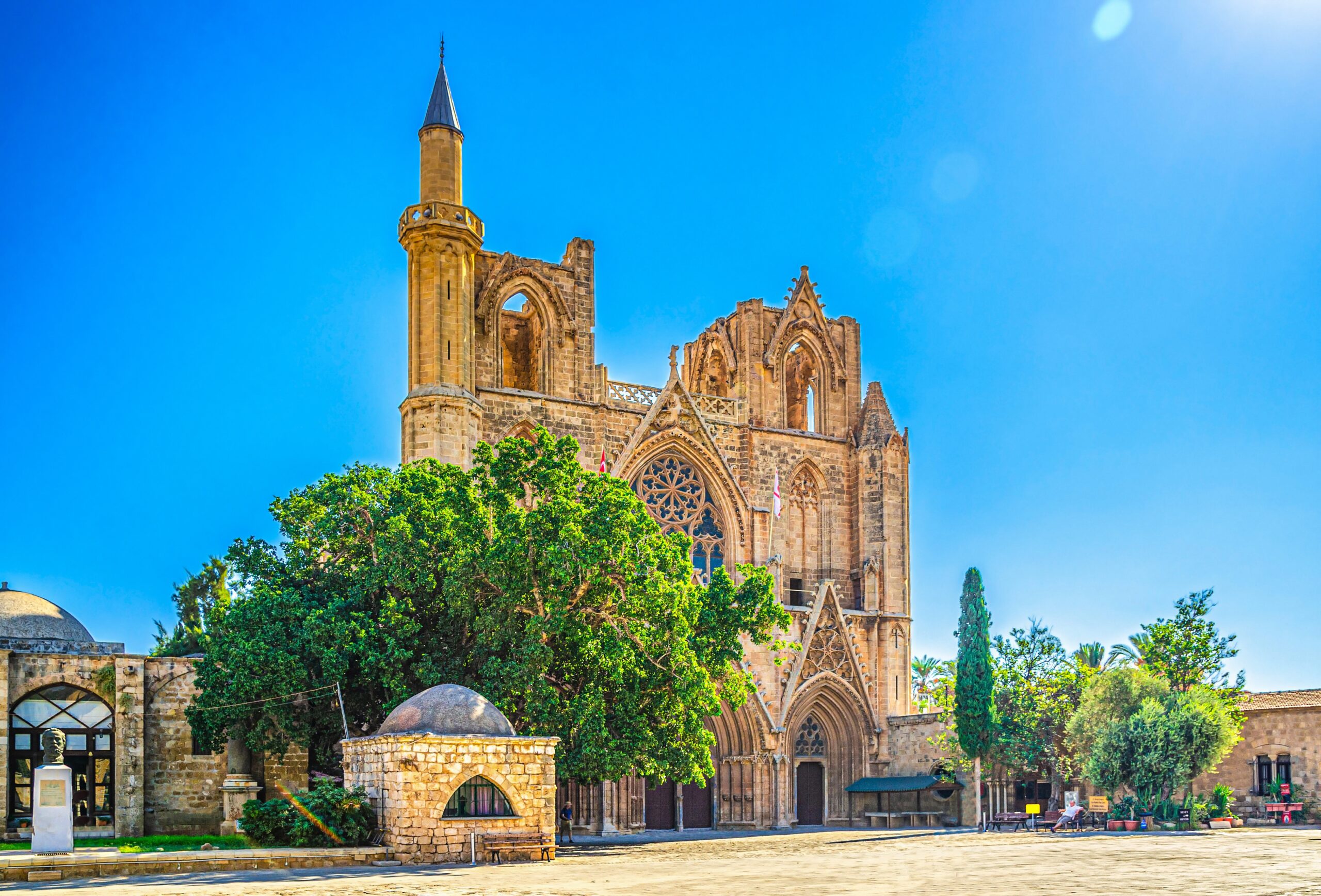Famagusta
A Storied Past and a Ghostly Present
From its ancient roots in Salamis to its modern-day challenges and transformations, Famagusta stands as a living tapestry of history and culture. The city has been shaped by empires from the Assyrians to the Ottomans, each leaving an indelible mark. The name Varosha, likely coined during Ottoman rule, adds another layer to this rich mosaic. Despite the trials of invasions and political upheaval, Famagusta, along with its suburb Varosha, remains a symbol of resilience and hope for a peaceful future.
The Island of Cyprus Tweet
Famagusta: Echoes from Time's Tapestry
Amidst the shimmering blue of the Mediterranean, where golden sands whisper tales of yore, lies Famagusta. A city whose every stone and curve has been shaped, not just by the hands of its builders, but by the ebb and flow of history itself. It is here that dreams of ancient settlers, the ambitions of mighty empires, and the aspirations of its modern-day denizens converge.
Ancient Foundations: The Dawn of Famagusta
The Cradle of Arsinoe and Early Settlements
Before the thriving ports and the sprawling cityscape, Famagusta was ‘Arsinoe’. Named in honor of a queen whose life was a dance of passion and power, Arsinoe was the early whisper of a city destined for greatness. Its settlers, lured by the promise of fertile soils and the mesmerizing embrace of the sea, planted the seeds of civilization on this Cypriot haven.
The Majestic Salamis: The City Before the City
Salamis, a city steeped in history and legend, stands just a stone’s throw away from the bustling city of Famagusta. Its ancient ruins and remnants serve as silent witnesses to the passage of time, holding within them tales of civilizations long gone.
The origins of Salamis are intertwined with the epic tales of the Trojan War. Legend has it that Teucer, a renowned archer who fought valiantly in the Trojan War, founded the city. Unable to return to his homeland after failing to avenge his brother Ajax’s death, Teucer sought refuge on the island and established Salamis as a testament to his legacy.
Over the centuries, Salamis became a melting pot of cultures and empires. The Assyrians, with their vast empire and intricate art, left their mark on the city. The Egyptians, known for their architectural prowess and reverence for the divine, added to the city’s grandeur. The Persians, with their unparalleled administrative skills, brought order and governance. And the Romans, with their penchant for grandiosity, further embellished the city with architectural marvels.
The marble streets of Salamis have seen countless feet tread upon them, each leaving behind stories of victories, defeats, love, and loss. These streets have witnessed processions of triumphant warriors, parades of artistic maestros, and the everyday life of its citizens.
One of the city’s most iconic structures, the amphitheater, stands as a testament to the artistic and cultural zenith Salamis achieved. Here, performers from distant lands showcased their talents, and the air was often filled with the melodious tunes of symphonies, the passionate dialogues of plays, and the cheers of an appreciative audience.
However, like all great cities, Salamis too faced the inevitable cycle of rise and decline. As its prominence waned, another city, Famagusta, began to emerge on the horizon. But instead of fading into oblivion, Salamis bequeathed its rich heritage, spirit, and essence to Famagusta. The newer city, while carving its own identity, was deeply influenced by the legacy of Salamis, ensuring that the ancient city’s spirit lived on.
The Medieval Chronicles of Famagusta
As the echoes of Salamis began to fade, the medieval era cast its shadow upon the land, bringing with it dynasties and empires that would further shape the destiny of Famagusta, also known as Ammochostos. The city, with its strategic location, became a coveted jewel for many, and its tales during this period are woven with ambition, artistry, and resilience.
The Lusignan Dynasty: Famagusta's Golden Epoch
With the arrival of the Lusignan Dynasty, Famagusta, or Ammochostos as it was locally known, entered a golden age. The Lusignans, with their European roots and Eastern aspirations, transformed the city into a hub of commerce, culture, and art. Grand cathedrals rose, markets bustled with traders from distant lands, and the city’s harbors saw ships with sails of various designs. The once modest town now shimmered with opulence, earning its reputation as the “Jewel of the East.”
Venetian Labyrinth: An Era of Walls and Waterways
The winds of change brought the Venetians to the shores of Famagusta. Recognizing the city’s strategic importance, they embarked on an ambitious project, turning Famagusta into a fortified labyrinth. Mighty walls, which stand to this day, encircled the city, and intricate waterways crisscrossed its expanse. The Venetians, with their love for art and architecture, added a touch of their homeland to Famagusta, making it a blend of Eastern charm and Venetian grandeur. Yet, hidden within its walls was the once-thriving district of Varosha, a silent witness to the city’s ever-changing fate.
Ottoman Silhouettes: A Blend of the Crescent and the Cross
As the Venetian sun set, the horizon saw the rise of Ottoman silhouettes. Famagusta, resilient as ever, found itself under a new banner. The Ottomans, with their rich tapestry of cultures, brought a blend of the crescent and the cross to the city. Mosques and minarets stood alongside churches and cathedrals, symbolizing a confluence of faiths. It was during this period that the suburb of Varosha likely received its name, derived from the Turkish word ‘Varoş,’ meaning ‘suburb’ or ‘outer town.’ The city, along with Varosha, while retaining its essence, absorbed the new influences, making it a mosaic of histories and traditions.
Modern Times: The British Colonial Era and the Road to Independence
As the pages of history turned, Famagusta, the storied city once ruled by empires and dynasties, found itself under a new dominion: the British Empire. The colonial era, with its blend of administration and ambition, brought both change and continuity to the city’s landscape.
Colonial Influence
Under British rule, Famagusta, often referred to by its local name, Ammochostos, underwent significant infrastructural and administrative transformations. The British introduced modern amenities, revamped the city’s governance, and integrated Famagusta into their vast colonial trade network. The architectural landscape too saw a shift, with colonial-style buildings dotting the cityscape. Yet, amidst this modernization, the haunting beauty of Varosha remained, a silent testament to Famagusta’s rich past.
The Struggle for Independence
As the decades rolled on, the winds of change began to stir once more. A fervent desire for independence began to resonate within the hearts of the people. Famagusta, with its history of resilience and adaptation, became a focal point in this struggle. Protests, negotiations, and passionate debates marked this era, as the city’s inhabitants yearned to reclaim their sovereignty. Their collective spirit, echoing the tales of their ancestors, eventually paved the way for the dawn of a new chapter in Famagusta’s storied journey.
Following the fervor of the independence movement and the end of British colonial rule, Famagusta, or Ammochostos, found itself on the precipice of another transformative era. The year 1974 would etch itself into the annals of the city’s history, marking a period of profound change, loss, and longing.
1974 Invasion: A Turning Point in Famagusta's History
The mid-20th century saw the Mediterranean island nation of Cyprus caught in a whirlwind of geopolitical tensions. Famagusta, with its strategic importance and historical significance, stood at the heart of these unfolding events.
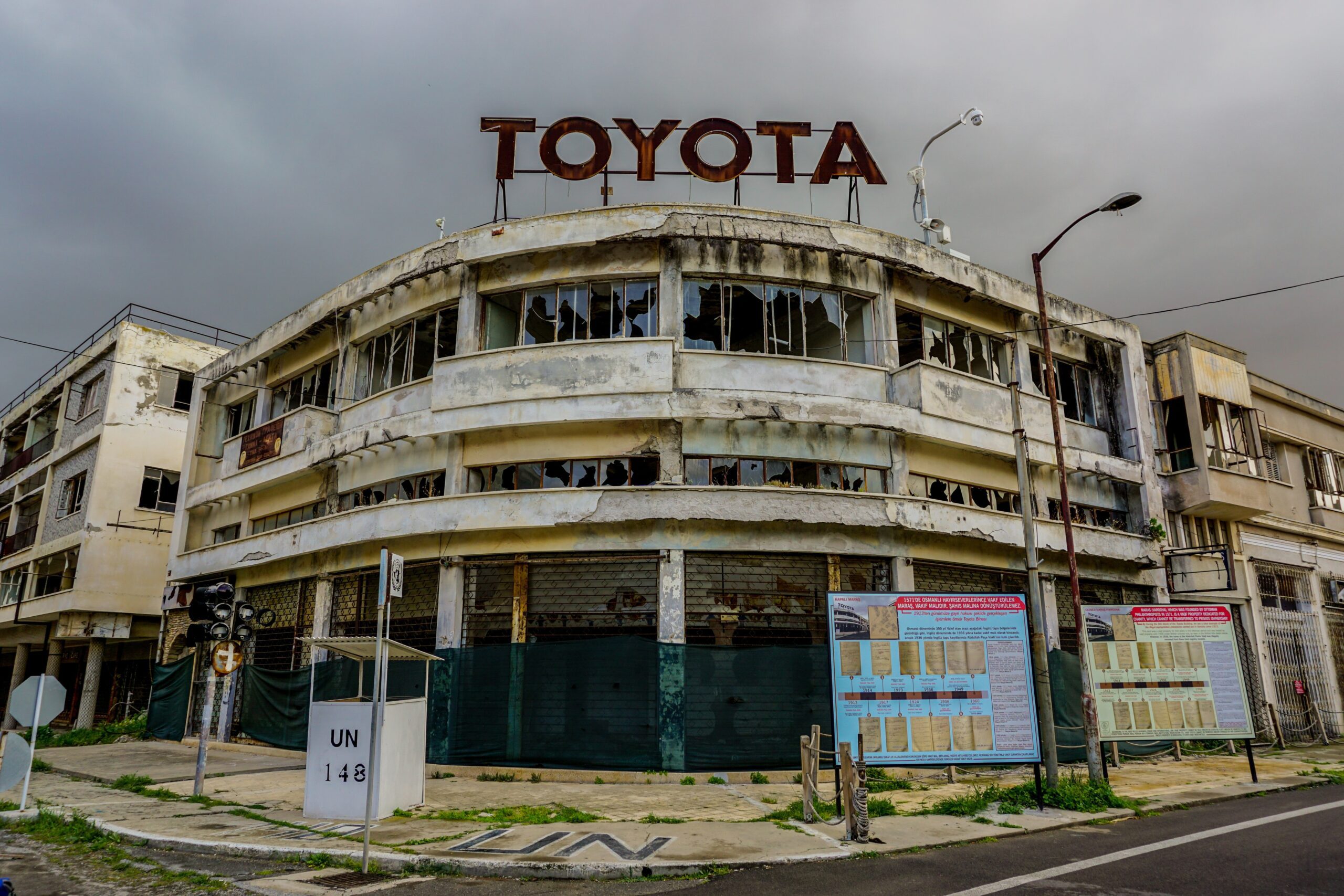
Prelude to Invasion
The early 1970s were marked by escalating tensions between the Greek Cypriot and Turkish Cypriot communities. Diplomatic efforts to bridge the divide were strained, and the island’s political landscape became increasingly volatile. Amidst this backdrop, the city of Famagusta, with its rich tapestry of cultures, hoped for a peaceful resolution.
The Turkish Invasion of 1974
In the summer of 1974, the simmering tensions reached a boiling point. Turkish forces launched an invasion, forever altering the trajectory of Famagusta’s history. The city, which had witnessed the rise and fall of empires, now faced an unprecedented challenge.
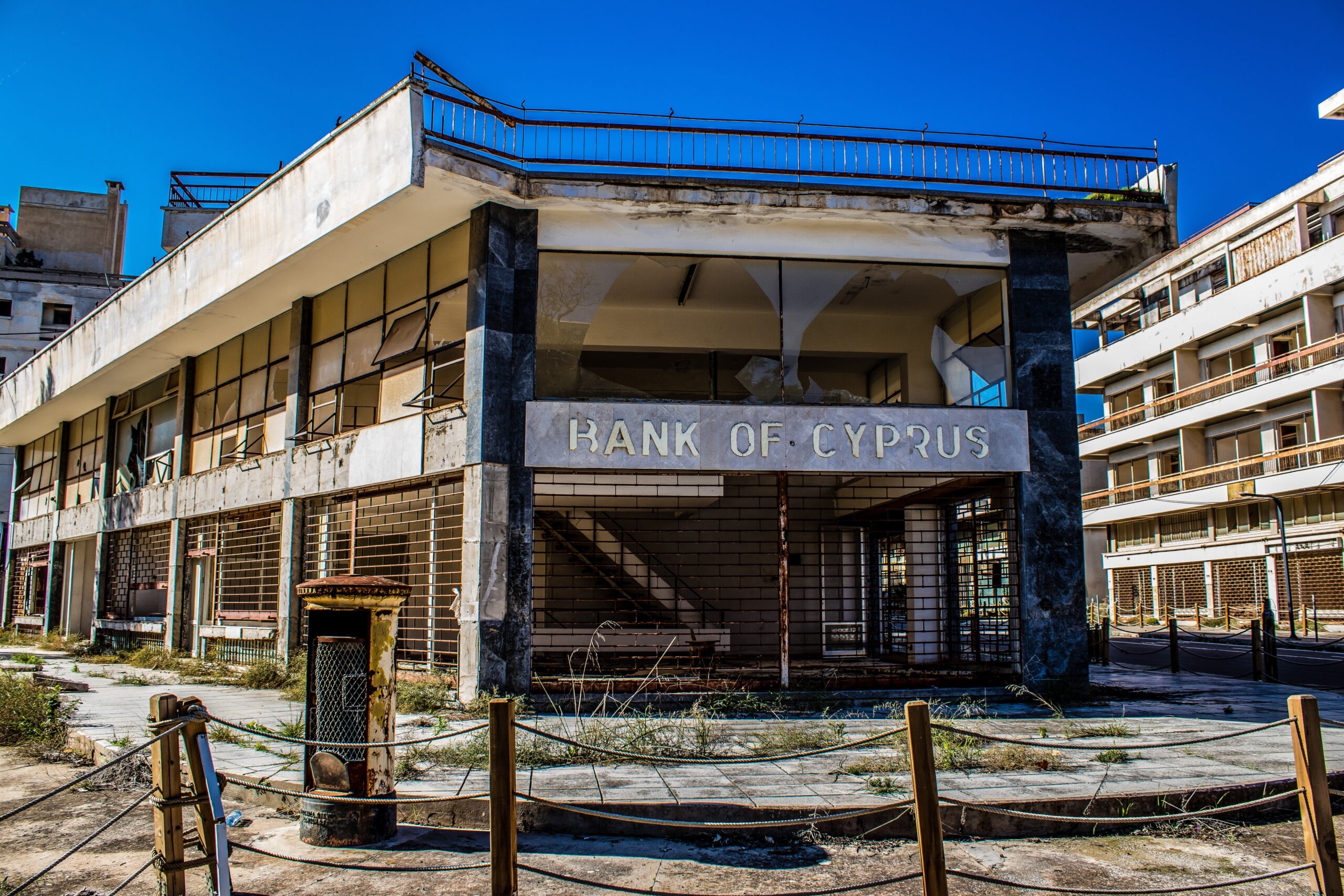
Aftermath and Illegal Occupation
The aftermath of the invasion saw a significant portion of Famagusta, including the iconic district of Varosha, fall under Turkish control. Deemed an illegal occupation by the international community, this event led to the displacement of thousands of Greek Cypriots from their ancestral homes. The bustling streets, vibrant markets, and lively neighborhoods of Famagusta were replaced with an eerie silence.
The Ghost City of Varosha
Varosha, once a jewel of Famagusta, became a ghost city. Its abandoned buildings, empty streets, and silent beaches stand as poignant reminders of the city’s tumultuous past. Time seems to have stood still, with the memories of its former inhabitants echoing in the wind.
While the pain of the past remains, the hope for peace and reconciliation endures. For many Greek Cypriots, the dream is to see Famagusta, the city of their ancestors, flourish once more, with its rich history serving as a bridge to a harmonious future.
In the wake of the profound changes of 1974, the region surrounding Famagusta, particularly Ammochostos, faced the challenge of rebuilding and redefining its identity. As the echoes of the past resonated, a new chapter began to unfold, one that would see the rise of new tourist destinations and a shift in the economic landscape.
Tourism Transformation: Paralimni, Protaras, and Ayia Napa
Shift in Tourism Focus
With Famagusta and the hauntingly silent Varosha no longer accessible to the majority of its original inhabitants and tourists, there was an imperative need to redirect the tourism focus. The region had always been blessed with pristine beaches, azure waters, and a rich cultural heritage. Recognizing this, efforts were channeled towards promoting other parts of the district that had remained untouched by the events of 1974.
Development of Paralimni, Protaras, and Ayia Napa
Paralimni, with its traditional charm, became a beacon for those seeking a blend of culture and relaxation. Protaras, known for its golden sands and clear waters, emerged as a family-friendly destination. Meanwhile, Ayia Napa, once a quiet fishing village, transformed into a vibrant hub, attracting tourists from around the world with its lively nightlife, stunning beaches, and festivals. These areas, collectively, became the new face of tourism in the Famagusta district.
The Role of Tourism in Economic Recovery
The development of these tourist hotspots played a pivotal role in the economic recovery of the region. As visitors flocked to Paralimni, Protaras, and Ayia Napa, local businesses thrived, employment opportunities grew, and the region began to regain its economic footing. Tourism, once centered around the historic charm of Famagusta and the allure of Varosha, found new life in these burgeoning destinations, showcasing the region’s resilience and adaptability in the face of adversity.
Famagusta's Resilient Spirit and Hope for the Future
Throughout its storied history, Famagusta, or Ammochostos, has witnessed the ebb and flow of empires, the rise and fall of dynasties, and the joys and sorrows of its people. The haunting silence of Varosha stands in stark contrast to the city’s once-vibrant past. Yet, the spirit of Famagusta remains unbroken. There is a steadfast belief that this coastal city, with its rich heritage and enduring legacy, will once again bask in its former glory. The descendants of the refugees, carrying the dreams and memories of their ancestors, hold onto the hope that they will return to their ancestral land. And in that return, they envision a future where the echoes of the past harmonize with the melodies of the present, crafting a symphony of peace and coexistence for all.

